By Robert Abong'o and Too Jared
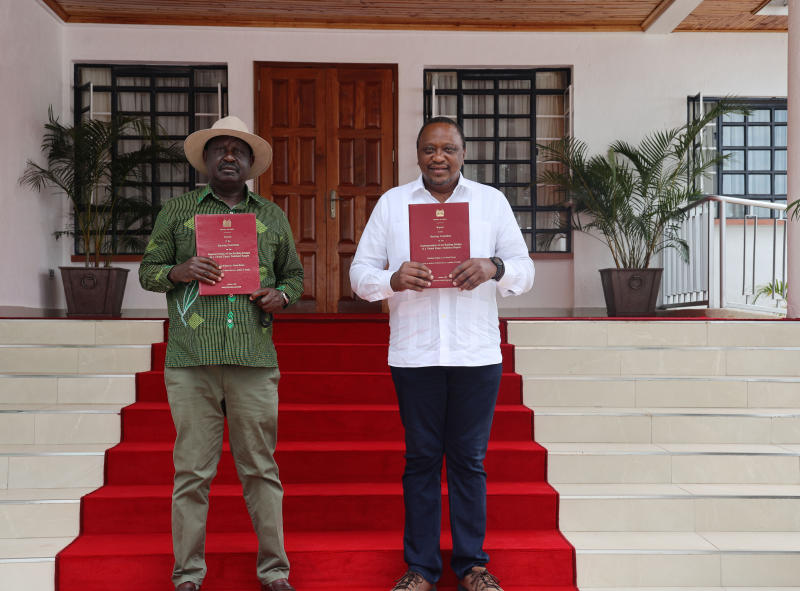
The Court of Appeal is today expected to give a verdict on the nullification of the Constitutional Amendment Bill, 2020 dubbed the Building Bridges Initiative (BBI).
A Seven-judge bench consisting of Court of Appeal President Daniel Musinga, Justices Roselyn Nambuye, Hannah Okwengu, Patrick Kiage, Gatembu Kairu, Fatuma Sichale and Francis Tuiyott will make the landmark ruling, that will shape the political landscape in Kenya.
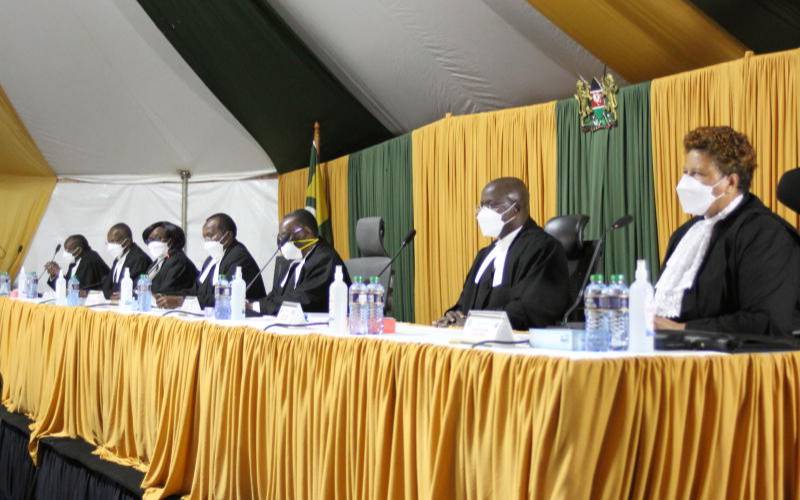
Chronology of Events:
7:02 pm: ODM leader Raila Odinga says BBI proposals to be revisited years to come; predicts Court of Appeal will throw out Constitutional change push.
Help us serve you better by completing our quick survey.
Start Now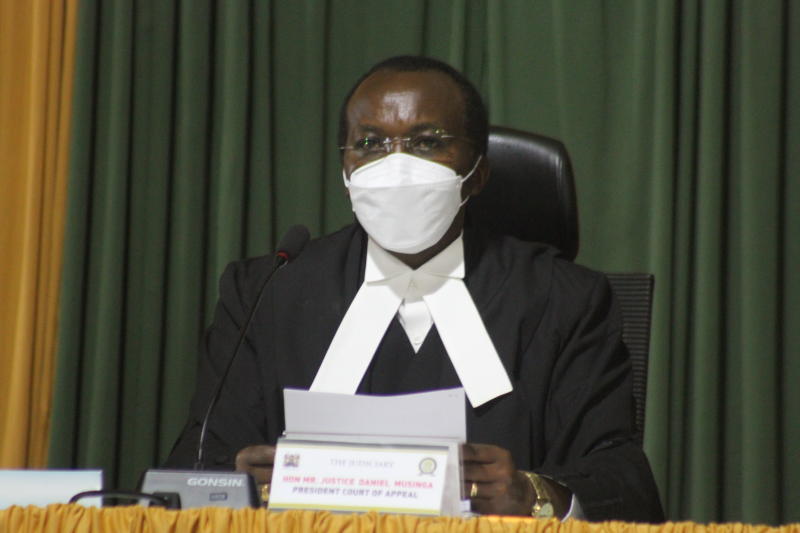
6:20 pm: Justice Daniel Musinga reads his judgement.
According to Justice Musinga, any amendment that alters the constitution fundamentally is not an ordinary constitutional amendment; it amounts to the dismemberment of the constitution.
Making his submissions, Musinga said some of the proposed amendments have the effect of interfering with the concept of separation of powers, which is well-engrained in the constitution.
He argued that the constitution of Kenya Amendment Bill 2020 as structured violates certain components of our constitution’s basic structure.
“Having the provisions that have been referred to as unamendable, immutable, unchangeable, unalterable, irrevocable eternity clauses ‘serve as a mechanism for limiting amendment power but they do not and cannot limit the primary constituent power of the people, however, I do not think that the alteration of the basic structure must be undertaken through the repeal of the constitution and the promulgation of another',” said Musinga.
On who initiated and promoted the BBI Bill, Musinga argued that there is no dispute that the promoter was the National Secretariat.
He submitted that the president confirmed through submissions before the court that he established both the BBI task force and Steering Committee.
“The president was the initiator having established and gazetted, under his hand, BBI taskforce and secretariat… It is evident that one of the major functions of the BBI steering committee was to propose, among other things, constitutional changes that were thought necessary for the implementation of the recommendations contained in the BBI taskforce report and submit a comprehensive report to the government. If this was intended, as it turned out to be, a move towards amendment of the constitution as a popular initiative; that is where the rains started beating the process,” submitted Musinga.
Noting that BBI Steering Committee had no constitutional mandate under Article 257 of the constitution, Musinga said argued that the move was initiated by the political elite, and not by the people of Kenya.
Musing highlighted that the appellants – on public participation - did not tell the High Court the number of Kenyans that have reliable access to the internet and were able to read and understand the English version of the bill.
“Article 7 (1) of the constitution says that the national language of the republic is Kiswahili, while Article 7 (2) provides that the official languages are Kiswahili and English. Considering that the national language is Kiswahili and all major political gatherings are addressed ion Kiswahili, it was dishonest on the part of the promoters to purport to have reached out to the masses by simply posting on the internet the amendment bill in the English language,” said Musinga.
He went on to point out that under our constitutional architecture, the President cannot initiate the process of amendment of the constitution as a popular initiative.
“The president’s intentions in initiating the process were noble but the process of its execution was not in line with the constitution,” submitted Musinga while agreeing that there is no statutory requirement for IEBC to carry out a nationwide voter registration before a proposed referendum.
He, however, underscored that the electoral agency is under obligation to carry out continuous voter registration in all constituencies.
Justice Musinga, after a near seven-hour judgement, then went on to issue a permanent injunction restraining IEBC from conducting a referendum on the Constitution Amendment Bill 2020.
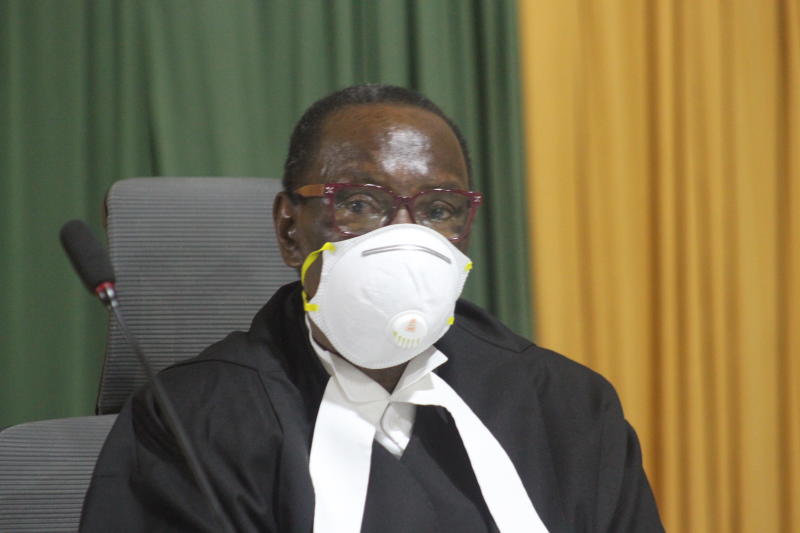
6:05 pm: Justice Roselyn Nambuye reads her judgement
Summarizing her submissions, Justice Nambuye said the thematic issues deliberated were common and agreed with fellow judges on, among others, that BBI was executive-driven.
Nambuye, however, dissented on determination that Basic Structure Doctrine applies to the Constitution of Kenya.
“My position on the alleged existence of eternity and unamendable clauses in the CoK 2010, is that taken by the appellants; that these do not exist. Reason being that in jurisdictions where these are found, they are expressly provided for,” said Nambuye.
She added, “Good prudence demands that there be constitutional changes which would in turn inform changes in the law to meet societal needs as and when such needs arise.”
6:17 pm: Justice Roselyn Nambuye finishes her judgement.
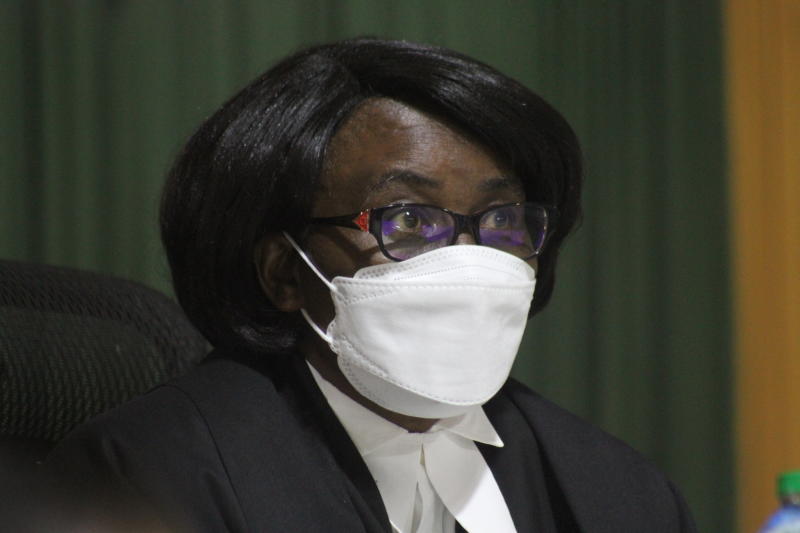
5:00 pm: Justice Hannah Okwengu reads her judgement
Justice Okwengu says she will add her voice on the basic structure doctrine and its applicability to Kenya, the remit of a popular initiative under Article 257, the legality of the BBI process and the President’s involvement and the propriety of proceedings against the President.
Constitutions, said Okwengu, are like human beings; they are never perfect. Each Constitution responds to different circumstances in a social setup that is not, necessarily, the same as another.
“Constitutions cannot, therefore, be the same. Many times, as happened during constitutional review processes in Kenya, compromises and concessions have to be made in order to arrive at an agreement,” said Okwengu.
Okwengu argued that an understanding must be made between an amendment of the constitution and a distinction between amendment and dismemberment or change and remaking of a constitution.
“An amendment is an alteration of the Constitution that is carried out within the confines of the existing Constitution. It alters the constitution in a way that does not radically change the nature of the constitution; which means, it must remain consistent with the object and purpose of the constitution. This is to be contrasted with change or remaking of the constitution which involves a complete review and, or, substitution of the former constitution which can only be done through the exercise of primary constituent power,” said Okwengu.
She highlighted that a popular initiative is an initiative of the ordinary citizenry as opposed to the law-making bodies that are intended to be used where the law-making bodies are unable or unwilling to act.
The president or any state organ, added Okwengu, cannot initiate an amendment through a popular initiative under Article 257.
“There must be meaningful participation. The adequacy of public participation, at the outset, is very crucial; if the people are not well informed and properly engaged, then that initiative cannot be a citizen process,” said Okwengu.
She concluded that the Constitution of Kenya (2010) is explicit and self-sufficient and pointed out that amendments must be within constitutional boundaries.
Justice Okwengu: “Although all the core parts of the constitution are amendable under Chapter 16, there is an implied limitation that amendment will only be permissible if compliant with the purpose and spirit of the Constitution. Any proposed constitutional amendment must pass muster, both the procedural and substantive test.”
While rejecting the assertion that the BBI Secretariat was distinct from the BBI Steering Committee, Okwengu said she agrees with the majority that the BBI draft cannot be subjected to a referendum because it violated the constitution.
“The BBI process remained executive driven, and a promoter of the Amendment Bill 2020 was the president through the BBI Steering Committee. The attempt by the president to pursue A popular initiative through the BBI Steering Committee was unconstitutional and unlawful; and to that extent, neither the BBI nor the steering committee had the competence to promote the Draft Bill 2020,” said Okwengu.
She averred that no evidence was laid before the court to prove that there was any meaningful public participation before the collection of signatures in support of the proposed constitutional amendments.
“I uphold the finding by fellow judges that the BBI Steering Committee, as a promoter of Kenya Constitution Amendment Bill, failed to comply with key constitutional requirements of giving people information and sensitising them prior to the collection of signatures, and this rendered the process constitutionally unsustainable,” said justice Okwengu.
She observed in her final submissions that judges, as custodians, have risen to the challenge to protect the constitution from unconstitutional amendments and that ultimately, regardless of the outcome, the constitution won.
6:00 pm: Justice Hannah Okwengu finishes her judgement.
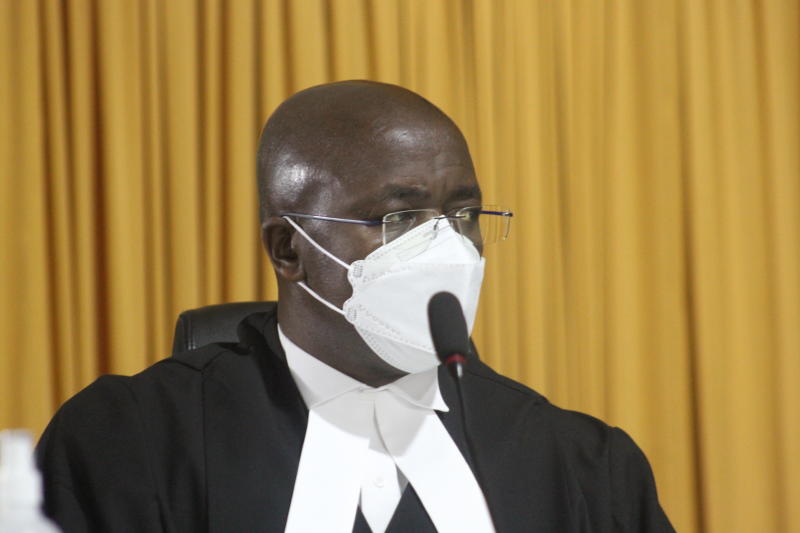
2:40 pm: Justice Patrick Kiage begins his judgement
Justice Kiage on the interpretation of the constitution: "We need a purposive, value-laden and principled approach as opposed to a narrow, neutral and ultimately neutered formalism
On the spirit of the constitution, Justice Kiage said it must preside and permeate the process of judicial interpretation and judicial discretion.
“It is a mirror that reflecting the national soul; the identification of ideas and aspirations of a nation, the articulation of the values binding people and disciplining its government… We dare say that there is a spirit that relentlessly pervades this provision. As a consequence, that spirit, which is always speaking, must be discerned as an integral part of interpreting the provisions of the constitution,” said Kiage.
Kiage added that he finds it strange that anyone would doubt the existence of a basic essential core being the pillar upon which the constitution stands.
“The conclusion I have arrived at, during my forays into judicial jurisprudence and learning that I have referred to, and much more besides, is that basic structure doctrine is legitimate and sound.”
The judge said he agrees with fellow learned judges that the amendments proposed by the BBI amendment and Bill were so far-reaching in character, scope and content as to shake the foundation and alter the identity and character of the constitution.
“They were effectively dismembering the constitution, blasting so huge a hole in it as to pulverize, and essentially create a new Constitutional order,” he said.
The judge went on to observe that mere invitation of the people to vote on the radical transformative proposal at a referendum was not an effect summons on the correct authority.
“The people, acting on the amendment plane constitute the secondary constant power only and are limited to amendment. They are in no position, while acting in that capacity and space, to endorse and effect a constitutional replacement,” said Kiage.
He added: “The limitation, in this case, stems from the fact that certain aspects of the proposed amendments questionably go to the essential core and fundamental fabric of the constitution by purporting to alter, irredeemably, its character and identity.”
On the referendum, Kiage said it cannot be effective unless the initial three steps have been involved and engaged in real and substantive manner as opposed to a ritualist and minimalist manner akin to a mere token ticking of boxes.
“The amendments proposed and contemplated by the BBI amendment Bill have the potential to alter by one fell swoop the fundamental pillars that define our constitution.”
“To me, there is only one path that commends itself consistently with conscience and fidelity to the constitutional demand,” said Kiage as he offered that he must defend the constitution and keep its fortification firm and effective. “I must stand up for it heeding to the words of the hymn, ‘Where duty calls or danger, be never wanting there’.”
Delivering his decision on the legality of BBI, specifically on whether it was a popular initiative, Justice Kiage noted that a popular initiative is a citizen-conceived, citizen-initiated and citizen-driven process.
Kiage said the President does not shoulder any obligation to initiate constitution changes. His [President] duty, said Kiage, is to obey and defend it in keeping with the oath of allegiance.
“If the process is born of presidential fiat, no matter how well-intentioned, it ceases to be a popular initiative and must be named a state or presidential initiative. Popular, as a sense of gaining admiration by many people, is not what is meant by the constitution. Popular means as pertaining to the general public,” said Kiage.
Kiage observed that the BBI steering committee was a government project.
“The steering committee was a government project. They were prominent personalities joined together by presidential fiat; they had no mind or idea of their own to initiate but were instead tasked to identify constitutional, among other changes.”
4:50 pm: Justice Kiage finishes his judgement
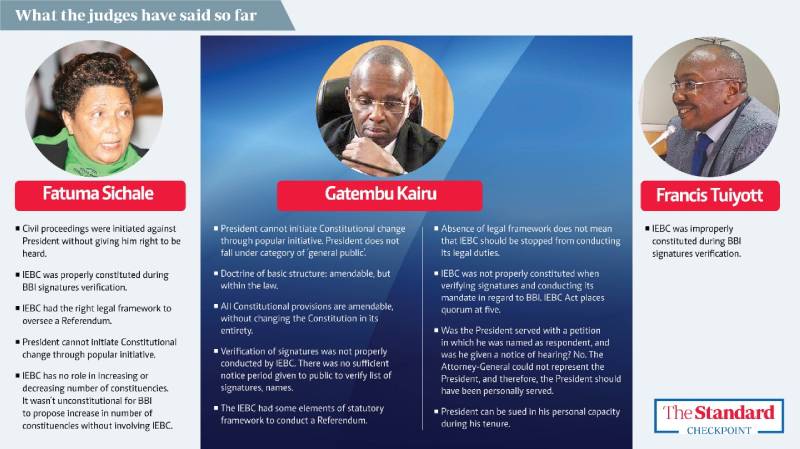
12:33 pm: Justice Gatembu Kairu begins his judgement
After looking at arguments from both sides, Justice Gatembu says: “In terms of identification of the basic structure (in the constitution), the court stated that it consists of the foundational structure provided in the preamble, the 18 chapters, the 6 schedules which form its fundamental core structure, values and principles, which cannot be amended without recalling primary constituent power of the people.”
He reads these structures outlines the system of government Kenyans chose including the design of the Judiciary, Parliament, Executive and Independent commissions in the devolved system of government,” he adds.
After looking at arguments from both sides, Justice Gatembu says: “In terms of identification of the basic structure (in the constitution), the court stated that it consists of the foundational structure provided in the preamble, the 18 chapters, the 6 schedules which form its fundamental core structure, values and principles, which cannot be amended without recalling primary constituent power of the people.”
He reads these structures outlines the system of government Kenyans chose including the design of the Judiciary, Parliament, Executive and Independent commissions in the devolved system of government,” he adds.
In contrast, he said the court stated Article 2(5) that provides “The general rules on International Law shall form part of the law of Kenya is also part of the basic structure. The spirit and the core meaning/value of that clause cannot be changed without involving primary constituent power. It may, however, be amended through the secondary constituent power under Article 255 to clarify its meaning.”
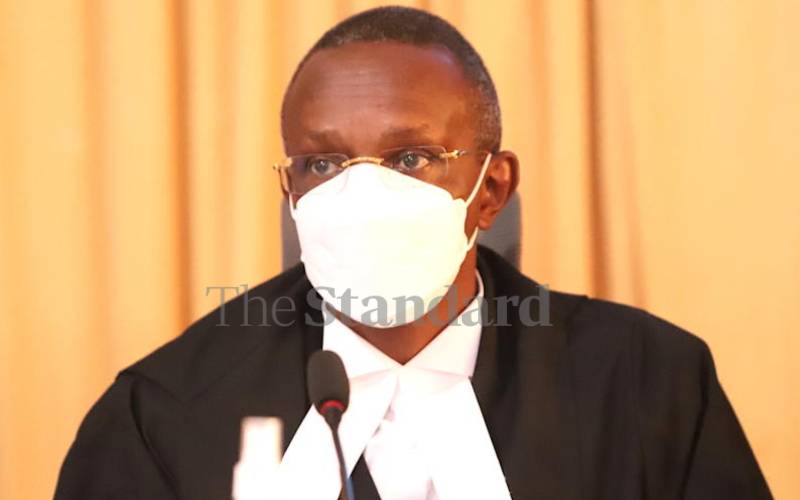
On the applicability of the Doctrine, Justice Gatembu says: “The question of whether the High Court correctly determined the doctrine of basic structure is applicable in Kenya is a difficult one. The arguments advanced by learned councils on both sides are powerful and most persuasive.”
He borrows from D.Smith’s book ‘Constitutional and Administrative Law’ which argues: “Although written constitutions differ wildly in their purposes, form and content, they will normally be found to have 2 characteristics in common, namely: Fundamental law of the land and a kind of higher law, and the legal source of legitimate authority. A higher kind of law in that the law set out in the constitution would be hierarchically superior to other laws and will not be alterable except by specially prescribed procedures for amendment.”
He goes on to cite Chapter 16 of the Kenyan Constitution which prescribed the amendment procedures. He explains Article 255 (1) stipulates “a proposed amendment to the constitution shall be enacted in accordance with Article 256/7 and approved in accordance with clause 2 by a referendum.”
He argues that provisions in Chapter 16 would appear clear and unambiguous and construed in their natural and ordinary sense would mean that every provision is amendable provided the stipulated process is followed. However, Article 259 commands the Constitution will be interpreted in a manner that will promote its purposes, values and principles, advances the rule of law and human rights and fundamental freedoms in the bill of rights, permits the development of the law and contributes to good governance.
Article 10, he argues stipulates “In applying or interpreting the contrition, the national values and principals of governance including the rule of law, democracy and participation of the people bind all organs.”
Given the above principles of constitutional interpretation, Justice Gatembu says “the High Court was right in the methodology it employed in interpreting constitutional provisions from a historical and contextual perspective and the complaint that the court misapprehended the methodology applicable is not well-founded.”
Was the high court right in holding that it applies to Kenya?
He used a Ugandan article titled the ‘Basic structure doctrine and constitutional restraint’ by Benson Tusariwe which reads “the constitution has certain basic features that underlie its spirit. These features constitute the inviolable core of the constitution and any amendment which purports to alter the constitution in a manner that takes away the basic structure is void and of no effect.”
He also uses a book (Unconstitutional Constitutional amendments: The limits of Amendment powers) quoted widely by both counsels which states, “Under the doctrine, the amendment power is not unlimited. Rather, it does not include the power to abrogate or change the identity of the constitution or its basic features. Any organ established within the constitutional scheme to amend it, however unlimited it may be, cannot modify the basic pillars underpinning its constitutional authority so as to change the constitution’s identity,”
He uses several phraseologies in reference to the doctrine of basic structure.
Justice Gatembu argues the doctrine of basic structure is not new to their jurisprudence.
“The doctrine of basic structure and the pillars on which it is founded has been recognized and applied by our courts. It is not an alien concept,” says Justice Gatembu.
Gatembu notes Kenyans intended each of the Four steps in constitution-making would be necessary before they denatured or replaced the social contract they equipped themselves in the form of the 2010 Constitution. To fundamentally alter it, and equally vigorous process must be undertaken.
“Provided the amendments proposed do not amount to dismemberment or abrogation, they are permissible. But even then, such amendment must be done in accordance with article 257,” he says.
Gatembu argues the proposed doctrine does not prevent genuine amendments to the constitution. He says there are no eternity clauses in the constitution.
On Popular initiative and public participation, Justice Gatembu’s view is “There is no qualification of who may/not promote a popular initiative. There’s no explicit bar against any person, including the President from promoting constitutional amendment by popular initiative.”
He says public participation is a fundamental constitutional principle in Kenya. “I'm in agreement with the High Court that there is a legal requirement under article 10 of the constitution for voters to be supplied with adequate information to make informed decisions. There is no evidence that was done in this case.”
On verification of signatures: “Independent commissions are clothed with discretion and latitude to decide the governance process and the procedure to employ as to how and when to execute their mandate as long as it’s within the law,” Gatembu says.
“Had the IEBC given sufficient notice, opportunity and means to the public to interrogate the list, it would have perhaps considered having discharged its duty of ascertaining and verifying that the registered voters, who had indicated a supporting it, had indeed done so,” he added.
Regulatory and legal framework: “There is undoubtedly, therefore, some legal framework albeit not an elaborate one for the conduct of referendum even though it may not specifically address all aspects of a referendum including the collection, presentation and verification,” Justice Gatembu explains.
1:36 pm: Justice Gatembu finishes his judgement.
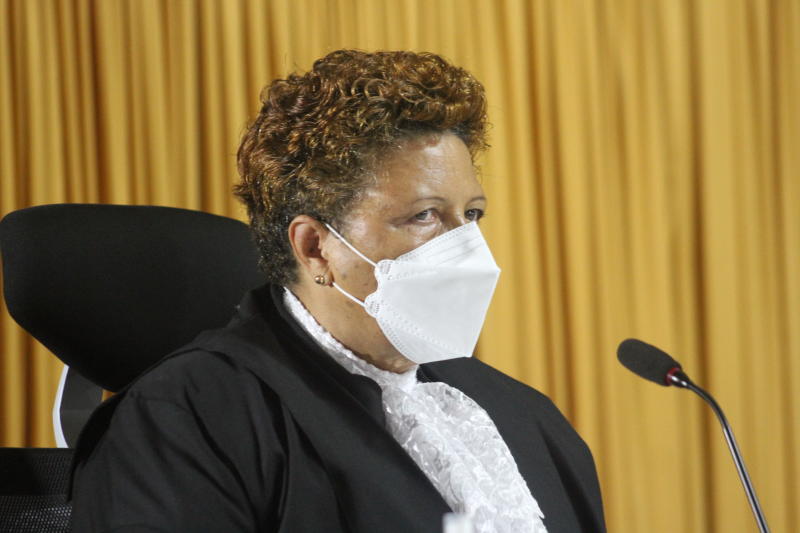
11:20 am: Justice Fatuma Sichale reads her judgement
Is the basic structure of the doctrine applicable in Kenya?
Justice Sichale noted the appellants and respondents in support of the appeal and the respondents opposed to it both relied on scholarly writings as well as history, text and context of the 2010 constitution.
She says scholars were not in agreement on the applicability of the Doctrine. Professors Migai Aketch and Charles Manga supported the non-applicability of the basic structure doctrine in Kenya, while Dr Ojwang, Dr Linda Musumba and Dr Osobu supported the notion of its applicability.
Respondents opposing appeal expressed fear that if the Legislature is left unchecked, the 2010 constitution may be dismembered and mutilated to the extent of it being a shell of the constitution. The respondents urged the court to find out that the basic structure doctrine is rooted in Kenya’s history, text and experience, as well as comparative constitutional theory in the form of decided cases and scholarly works.
Respondent's argument was that the cause must reconcile contradiction, draftsmanship gaps, vagueness and phraseology and arrive at the conclusion that the basic structure doctrine is applicable in Kenya for the safety of the 2010 constitution. They relied on several authorities to support their contention:
Justice Sichale uses the example of a case (Mother Kerubo Moracha vs UoN) in the commission of the implementation of the constitution vs national assembly where the judge (Justice Lenaola) held that:
“Where the basic structure, design and architecture of our constitution is under threat, the court can genuinely intervene and protect it,”
The respondents also relied on other scholarly works including one which stated, “In order to find an amendable basic principle, one has to resort to the interpretation of the constitution as a coherent whole,” she reads.
Respondents opposed to the appeal also argued that notwithstanding the fact that the 2010 Constitution does not expressly bar amendments, it does so implicitly as one has to pay attention to its overarching themes and/or the spirits of the constitution.
Heavy reliance was placed on an Indian Supreme Court decision on Kesevenanda, where it was held there are some provisions in the Indian Constitution that form the basic structure of a constitution, hence not amendable, not even when the prescribed procedures are adhered to.
Justice Sichale says appellants and respondents in support of the appeal urged the court to find that the 2012 constitution had sufficient safeguards that mitigate against hyper-amendments of yesteryears. They also relied on decided cases, these included:
Council of Governors vs Attorney General where the Supreme Court stated, “Court may not impose a meaning that the text is not reasonably capable of bearing. Interpretation should not be unduly strained. It should avoid excessive peering at the language to be interpreted.
On the invocation of the spirit of the constitution, reliance was placed on a South African decision (Premiere of Kwazulku Natal v President of South Africa) where the court held that: “The reliance upon the spirit of the constitution is in my view misconceived. There is a procedure that is prescribed for amendments to the constitution which have to be followed. If that is properly done, the amendment is constitutionally unassailable.”
Justice Sichale goes on to give examples of cases appellants and respondents in support of the appeal relied on.
She highlights the manner in which the 2010 constitution was used and abused for political gains.
She gives the example of Paul Ngei in 1974. He was barred from running for elections having been found guilty of an electoral offence. To save him, President Jomo Kenyatta passed into law a bill pardoning Mr Ngei.
Justice Sichale, says the proposed amendment process was largely initiated by the Executive and not the people who are the constitutional decision-makers.
She argued proposals by the BBI secretariat co-chairs should have been done via a parliamentary process, which is the route of any popular initiative.
“The proposals by Junet Mohamed and Dennis Waweru (BBI Secretariat Co-Chairs) would have been best channelled through a parliamentary process, this was not a Wanjiku process. The process leading up to the formulation of the Constitution of Kenya Amendment Bill, in my view, was largely driven by the Executive," she said.
“It was wrong for the High Court to proceed with the hearing and thereafter make adverse findings against His Excellency President Uhuru Kenyatta without ascertaining whether he had been served either with the petition and or the subsequent hearing notices,” Justice Sichale explained, faulting the five-judge bench for making findings without confirming whether President Uhuru Kenyatta had been served.
Justice Sichale noted verification of signatures does not require the IEBC to have a quorate, adding a constitution must be flexible to allow for a country’s growth and development.
“What is good for one generation may not necessarily be good for the next; present and future generations should not be ruled by the dead hand of their ancestors,” she added.
12:32 pm: Justice Sichale finishes her judgement.

At 10:10 am, Justice Francis Tuiyott begins reading his judgement
He covers just two portions of his decision: One, the basic structure doctrine and its application to Kenya.
He says the basic structure doctrine prescribes that "notwithstanding the absence of explicit limitations on the constitutional amendment power, there are implied constitutional limitations which guard against amendments that change its identity."
He proposed the doctrine should be rejected because: "Had the framers of the constitution intended this category of limitation to be part of the law, then they should have found explicit expression in the text of the constitution."
Another matter he reflects on is what constitutes the basic structure in Kenya's constitution. Justice Tuiyott says, "fundamental alterations to the core of the constitution requires the exercise of the primary constituent power of the people."
He says it is Common ground interpretation of the constitution is influenced by both text and context.
He gives an example of the Supreme Court of India decision in the Reserve Bank vs PLS General Finance Investment and company, where the court said interpretation must depend on text and context. If the text is texture, context gives colour.
He says a history of the making of the 2010 constitution gives colour to the text of the provisions of Chapter 16 on amendments.
Justice Tuiyott points out the Bomas of Kenya initiative encountered a legal challenge, presented in the Njoya and six others vs Attorney General and another. The appellant in these proceedings earlier sought a declaration that certain provisions of the Kenya Review Act diluted the constituent power of the people to adopt a new constitution.
He says the making of a new constitution could be through the exercise of people’s constituent power perfected in a referendum. The Kenya Review Act was thus amended to provide for a mandatory referendum to ratify a new constitution.
He continues: “There was now a mechanism provided by statute for the adoption of a new constitution after the exercise of people’s constituent power in a referendum but which mechanism was not contemplated by section 47 of the repealed constitution. In the run-up to the referendum, the process faces another hurdle,”
He outlines a case in Nairobi (Miscellaneous civil application No 677, Onyango and 12 others vs Attorney General and 2 others). An issue that arose in those proceedings, which he says relates to the matter at hand was whether a new constitution could validly come into being without an amendment to section 47 of the existing constitution.
The three-judge bench then, observed as follows: “However, the exercise of legislative power and the distinction is not applicable to the making of a new constitution by a constituent assembly or referendum because constituent power is not subject to the restrains of any external authority. The constituent power to frame a constitution is unfettered by any external restrictions and is a plenary law-making power. The power to frame a constitution is a primary power, whereas the power to amend a rigid constitution is a derivative power since it is derived from the constitution and is subject to the limitations imposed by the prescribed procedure …”
On whether or not the constituent power of the people needed to be textualised, the judges said, “This court does not regard this as good constitutional law or justice. Section 47 does not deal with the making of a new constitution or the process of making one. The power to make a new constitution was not vested in Parliament, it is the amending power that is vested in Parliament, subject to the special procedures concerning the entrenched provisions and also subject to the doctrine of the basic structure …”
Important for the discussion at hand: There was an attempt to replace the constitution by the people exercising their constituent power, notwithstanding that the power was not expressly provided by the constitution sought to be replaced.
“A recognition in my view, that the power was not subject to restrictions or limitations prescribed by the written words of the constitution…”
Justice Tuiyott also highlighted a fresh drive to replace the constitution which came after the 2007/08 post-election violence. Here, he says Parliament enacted the Constitution of Kenya Review Act and the Constitution of Kenya Amendment Act. The latter Act introduced Section 47 to the then existing constitution, making provisions for its replacement.
The new 2010 constitution was therefore created in the context where the constituent power of the people to replace their own constitution has been codified in the constitution that was to be replaced.
Lesson to learn in this journey: 2005 and 2010 referendums are testimony that the people of Kenya embraced and adopted a constitutional making concept in which the sovereign rights to replace it was exercisable.
“The 2005 referendum tells us that constituent power is unfettered and unlimited notwithstanding that it is not textualised in the constitution to be replaced. While codifying the constituent power is good practice, failure to do so neither takes away or weakens the force of that power,”
He notes the provisions of Chapter 16 makes reference to the word ‘amendment’. He says Chapter 2 of the Interpretation and General Provisions Act is not helpful since those provisions don’t apply in the construction or interpretation of the new constitution.
“Unless otherwise expressed by a constitution, an amendment entails a minor revision, alteration or addition, but which nevertheless does not destroy the constitution being amended. It does not extend to abrogation, complete re-peal or replacement…” says Justice Tuiyott.
He says an amendment to transfer Judicial authority to the Executive is ‘un-making' the constitution since it fundamentally alters a central feature of the constitution. He argues an amendment is not as drastic because properly defined it keeps the altered constitution in unison with its pre-changed identity and structures.
He then refers to Article 255 (1), whose provisions he says only provide for an amendment, anything further must be sanctioned by the exercise of primary constituent power. The provisions of this article and the popular initiative were made against the backdrop, that the making/un-making of the constitution is a preserve of the people exercising their primary constituent power. A change that derogates from the core character of the Constitution is not a change in unity with it, but one that defaces it. That change too is one that can only be made by people organised and exercising their primary constituent power. By falling short of making provisions and procedures for un-making, re-peal, re-enactment, or abrogation of the constitution a textual reading of Article 255(1) is in accord with the contextual interpretation of the clause. The power to make such change rests elsewhere, in the primary constituent power of the people and it need not be codified.
Justice Tuiyott finishes his judgment at around 11:00 am.
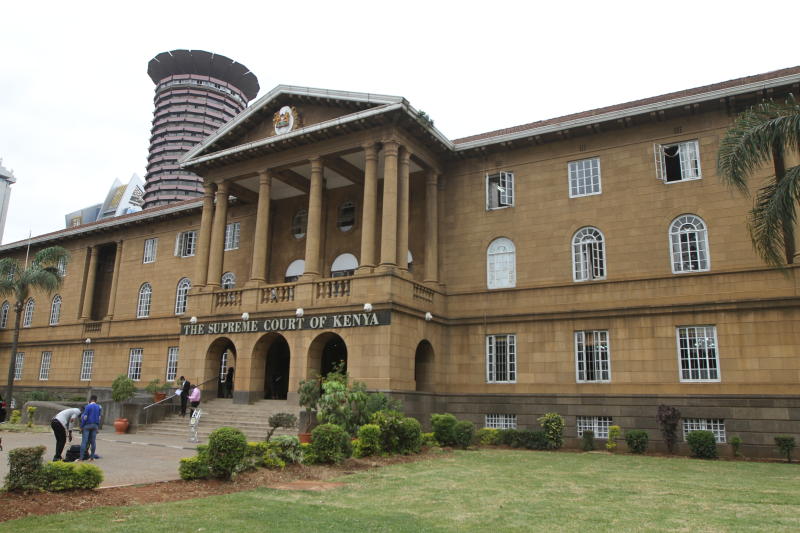
9:20 am: Court of Appeal President Daniel Musinga begins his introductory remarks. He revisits the issues appellants raised during the four-day Appellate Court hearing and gives responses.
9.00 am: Judges arrive at Supreme Court Buildings, Nairobi all set for the verdict.




No comments :
Post a Comment